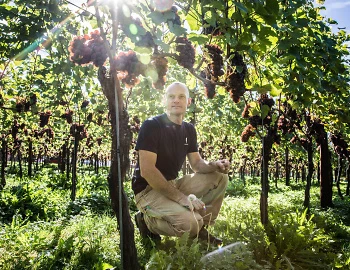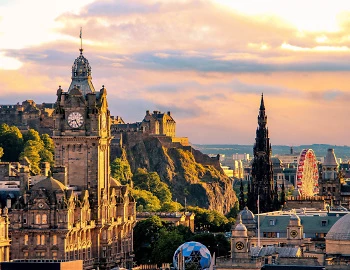Sette Cieli
It isn’t easy to ascend to seventh heaven. And indeed, the road to the wine estate Sette Cieli is fraught with some difficulties. You might need to take a few detours (seventh heaven isn’t on Google Maps’ radar), but the Ratti family’s wine paradise is more than worth the effort.
As is so often the case in the world of wine, this winery was created as the realisation of a dream. Erika Ratti made her dream a reality by planting the first vines in 2001 high above the Bolgheri plain, the birthplace of the world-famous Bolgheri wines. The magnificent view from up there extends from Monteverdi Marittimo, surrounded by dense forests, over the plain to the Tyrrhenian Sea shimmering on the horizon – a wonderful place!
Red wines from Sette Cieli
from Sette Cieli
At first, only few people believed that her vision of growing wine on the hillside, so far removed from the vineyards in the plain, had any chance of success. But her know-how, tenacity and hard work ultimately bore fruit. Now her son Ambrogio is carrying on his mother’s dream. He is joined by CEO Elena Pozzolini, an oenologist with a wealth of experience and a model of strength and vitality. Their high-altitude wines are different to the wines from the plain. They are powerful, complex, richly structured, unbelievably fresh and endowed with great potential. 10 hectares of Cabernet Sauvignon, Cabernet Franc, Merlot and Malbec grow at about 400 metres above sea level on stony soil permeated with sand and clay. Massive stone terraces were erected in the upper area. The Mediterranean climate at this altitude is characterised by cool winds and great variations in temperature. This unique terroir is one of the reasons these wines are so distinct.
Another reason is the careful cultivation of the vineyards according to organic guidelines combined with a great deal of manual labour. Down in the cellar, Elena works with the same great care and attention to detail. All wines are spontaneously fermented and each plot is vinified individually. This is how Indaco, Scipio, Yantra and Noi 4 are produced.
Indaco – indigo blue – embodies the soul, the perfect expression of the terroir. Blue is associated with the element earth, is the colour of stability, while indigo represents thoughtfulness and intuition.
Scipio, the pure Cabernet Franc, is named after the Roman commander who defeated Hannibal. And this wine lives up to its name.
Yantra is like the meditation diagram of the same name: complex in its simplicity, but suffused with harmony and joy.
Noi 4 pays homage to Bolgheri and is vinified from vineyards in the plain, which also belong to the estate. This sets it apart from the others as a typical Bolgheri wine.
Producer

Weingut Erich Meier
Read more
The Whisky Cellar
The Whisky Cellar was founded in 2017 as an independent Scottish bottler by whisky expert Keith Bonnington

Château Fourcas-Borie
The Bruno Borie family, which is also the owner of Château Ducru-Beaucaillou 2e Cru Classé in Saint Julien), acquired the Château Fourcas Dumont in 2009 and from then on named it Château Fourcas-Borie.










